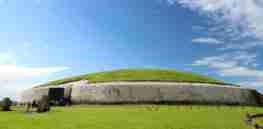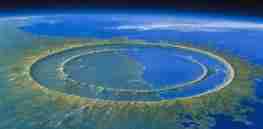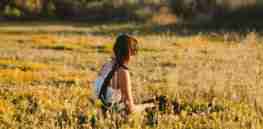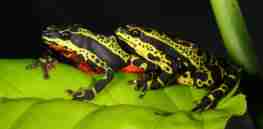Ancestry & Evolution
Humans vs. apes: Women are the secret factor explaining how we evolved to populate the world
The populations of the great apes were once nearly equal. Now, one great ape species—Homo sapiens—outnumbers the rest by almost ...
Vikings were not the first global voyagers. Bronze age Norwegians likely sailed the seas 2,000 years before
[A]rchaeologists who study Norway during the Bronze Age have discovered a great deal of new information. ... People who lived ...
Why did fatherhood evolve?
We might take the doting modern dad for granted, but if you take a look at the rest of the ...
350 million years ago, a thinning atmosphere sparked a mass extinction. We’re headed in the same direction
Scientists noticed that around the time of the Hangenberg Crisis, [fern] spores began to look strange. Some were much darker ...
How an event in what is now the United States may have contributed to the fall of the Roman Empire
With a new analysis of particles found in ice cores, researchers determined that [Alaskan volcano] Okmok's eruption coincided with Rome's ...
Zealandia revealed: Maps and interactive tools uncover backstory of Earth’s ‘lost’ eighth continent
Earth's eighth continent is 94% underwater.... ... Zealandia — or Te Riu-a-Māui, as it's referred to in the indigenous Māori ...
Why did menopause evolve?
To explain menopause, any hypothesis needs a plausible evolutionary scenario. It is reasonable to assume that the chimp/human common ancestor ...
What caused anatomically modern Homo sapiens to evolve into behaviorally modern people?
At some point, from around 40,000 years ago in Europe, we see evidence of these behaviourally modern humans in a ...
Genetics and race: An awkward conversation during volatile times
Discussing inter-group divergence is largely taboo. So do we just ignore the deluge of data? ...
Ancient African savanna was like a ‘chess board’, broadening the minds of early humans as they hunted for prey
Northwestern University researchers recently discovered that complex landscapes—dotted with trees, bushes, boulders and knolls—might have helped land-dwelling animals evolve higher ...
Extraterrestrial neighbors? Our galaxy contains over 30 intelligent civilizations, new calculations suggest
In 1961 the astronomer Frank Drake proposed what became known as the Drake equation, setting out seven factors that would ...
Recreating evolution: Human gene triggers bigger brains in monkeys
Researchers in Germany and Japan introduced a human-specific gene to the fetuses of common marmosets, Callithrix jacchus. In turn, that ...

DNA analysis of 5,000-year-old Irish remains reveals an incestuous elite social class
[Researchers found] an adult male buried at the 5,000-year-old Newgrange monument; his DNA revealed that his parents were first-degree relatives, ...
Estrogen slows down adult bone growth, leading to generally taller men and shorter women
Human sexual size dimorphism, the difference in height between males and females, is often touted as a classic example of ...

Dead or alive? The cosmology of viruses
Viruses are an inescapable part of life, especially in a global viral pandemic. Yet ask a roomful of scientists if ...
What the ‘lady in the well’ tells us about ancient population movement in the Middle East
The bones of a woman of Central Asian descent found at the bottom of a deep well after a violent ...
Lefty or righty? Is handedness genes or chance?
Many geniuses, from Einstein to Bill Gates were lefties. But left-handedness remains a rarity--only 1 in 10 of us are ...

Asteroid that wiped out the dinosaurs created perfect conditions for microbial life to thrive
The massive Chicxulub crater on Mexico’s Yucatán peninsula is the fingerprint of a killer, probably responsible for the destruction of ...
It started with rocks: How we developed belief, our ‘most creative and destructive’ ability
About 20 years ago, the residents of Padangtegal village in Bali, Indonesia, had a problem. The famous, monkey-filled forest surrounding ...
‘Speech-like signature’: Chimpanzees’ lip-smacks rhythm may offer clues about how we learned to talk
The evolution of speech is one of the longest-standing puzzles of evolution. However, inklings of a possible solution started emerging ...
Piecing together ‘jigsaw puzzle’ of Dead Sea Scroll fragments with the help of DNA sequencing
Ever since the Dead Sea Scrolls were discovered, scholars have tried to piece together the fragments as though they were ...
DNA from 14,000-year-old tooth offers oldest known link between Native Americans and southern Siberia
A 14,000-year-old genome scraped from a prehistoric tooth found in southern Siberia is now the oldest known connection linking living ...

Podcast: Out standing in the field – the highs and lows of fieldwork
We talk to the researchers studying genetics and evolution in action, from chasing butterflies up mountains to artificially inseminating kakapos ...
How weird can life on earth get? Check out these creatures found in deep arctic waters
How should we get our children, our parents and anyone else excited about biodiversity of tiny Arctic microalgae or Arctic ...
Prehistoric footprints offer snapshot of how our ancestors divided labor between men and women
Prehistoric footprints are a remarkable and precious source of evidence for the behavior and biology of ancient organisms, capturing a ...

Outside of ‘occasional surges’, biodiversity evolution has been largely stagnant for millions of years, studies suggest
The traditional view is that species have increased in diversity continuously over the past 200 million years, particularly in the ...
Recreation of Earth’s ancient hydrothermal vents suggests life could emerge even on ‘hellish worlds’
One theory for how life emerged suggests that it originated in the sea, at alkaline hydrothermal vents. It’s impossible to ...
Rise of the dinosaur may have been fueled by earlier mass extinction event
When it was alive, this large, crocodile-like reptile lurked in the swamps and rivers of the Triassic — a time ...

